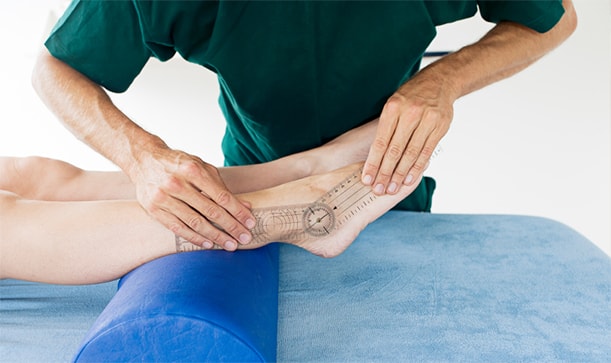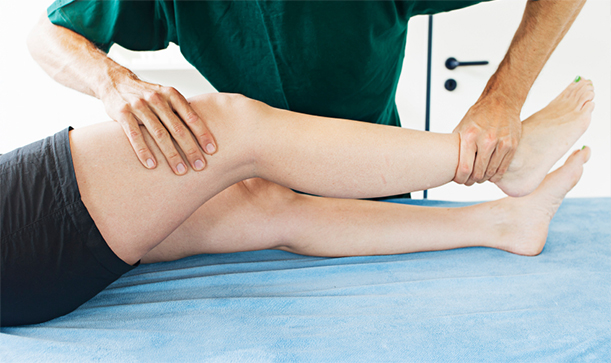CK Physiotherapy
AREAS COVERED
W7, W5, W13, Ealing, West London
57 Elthorne Avenue
Hanwell, W7 2JY
T: 020 8566 4113
M: 079 572 46185
E: info@ckphysio.co.uk
Location / Parking
We are situated in Hanwell, between Boston Manor Road and Northfields Avenue, south of the Uxbridge Road.57 Elthorne Avenue
Hanwell, W7 2JY
There are parking restrictions Mon - Fri 9-10am and 2-3pm. If you need a permit during this time please inform your therapist when you arrive. There are no parking restrictions at other times.
Opening Times
Please phone the number above during working hours to make an appointment. Our reception service will be happy to book your session.
London Underground / Bus Services
London Underground
10 min. walk from Boston Manor Tube Station.
15 min. walk from Northfields Tube Station.
Bus Service
E8, E3, E2, 207, 607, 83
Request Call Back
Our Blog
Lower Back Exercises at Work to Prevent and Alleviate Lower Back Pain
By: admin Date: Nov 29th, 2022Have you ever felt soreness or stiffness in your lower back?
You’re not alone.
It’s estimated that8 out of 10 people will experience lower back pain at some point in their lives, and a study byNuffield Health estimates that around 6 million people in the UK are currently living with ongoing back pain.
Many patients find that their lower back issues are work related.
Physiotherapy sessions can be helpful for prolonged back pain, but taking lower back exercises at work can often prevent or alleviate symptoms.
Why is lower back pain such a common problem in the UK?
A lot of people don’t realise that lower back pain can actually be caused by something as simple as sitting at a computer all day.
Especially if you have poor posture, remaining seated for long periods of time without moving your body can cause your muscles to become stiff and tight, causing pain.
With 81% of UK office workers spending between 4 and 9 hours a day at their desks, it’s easy to see why office workers are prone to developing lower back pain.
The rise in home working has increased the scale of the problem, with many home working setups having poor ergonomics that contribute to poor posture.
Of course, lower back pain issues at work aren’t only common with office workers. Manual workers are also susceptible to lower back pain, especially if they are lifting objects regularly with poor lifting technique or poor posture.
If you suffer from lower back pain that is severe or lasts for a prolonged period of time, you should consider physiotherapy services. But a lot of minor back complaints can be resolved with lower back exercises at work.
What are the symptoms of lower back pain?
Most people that suffer from lower back pain complain of a dull aching pain, a reduction in mobility and occasional mild spasms.
This can be frustrating, and the pain you feel can often have an impact on your quality of life, disrupting your sleep and stopping you from enjoying your favourite activities.
But if it’s left untreated by physiotherapy sessions for too long, ongoing lower back pain can lead to even more serious complications.
Your digestion may suffer. Maybe you lean back or hunch over to try and relieve the pain in your back. Being in these unnatural positions can result in pressure on your intestines and stomach, making it uncomfortable or more difficult to process food.
The disruption to your sleep and the ongoing pain over a period of time can lead to depression in some patients.
But perhaps the most serious complication is that prolonged nerve irritation in your back can lead to permanent issues with mobility.
So, if you’re suffering from ongoing lower back pain, it isn’t something you should ignore. It’s time to seek physiotherapy services.
How can I prevent or alleviate the symptoms of lower back pain at work?
If you’re working in a desk-based role, it’s important to take regular breaks away from your workspace so you’re not sat in one position for extended periods of time.
Consider using the Pomodoro technique, which encourages you to split your work into 25-minute intervals, with a short 5-minute break in between.
During your breaks, completing some simple lower back exercises at work can help prevent or alleviate any back pain symptoms.
But making it a habit is key. You should complete the exercises regularly, each time you have a break from your desk.
The more often you complete lower back exercises, the more likely they are to be effective for you.
What are some good examples of lower back exercises at work?
High Plank
The high plank is a great way to strengthen your core and back. To get into the position, get in a press-up position on the floor with your legs straight, feet together and arms straight out in front of you at shoulder height.
Keep your back straight and head looking down at the floor.
Hold this position for as long as you’re comfortable – ideally for around a minute.
Partial Crunches
Looking for a great lower back exercise at work to strengthen your back muscles and help prevent any stiffness? Try partial crunches.
Start by lying back with your feet flat on the floor, your knees bent and your hands behind your head.
Squeeze the muscles in your stomach as you slowly raise your shoulders off the floor. Keep your lower back in contact with the floor.
Hold the position for around 1-2 seconds, and repeat around 10 times.
Knee to Chest Raises
To get started, lie flat on your back with your knees bent and feet planted on the floor.
Slowly raise one knee up to your chest, keeping your back flat against the floor. Hold this position for around 30 seconds before returning to your starting position and repeating with your other knee.
Try to do around 3 or 4 repetitions for each leg.
Go for a walk!
If you’re looking for a simple lower back exercise at work, try walking!
Walking during regular breaks from your desk can be a great way to prevent work related lower back pain.
Walking improves circulation in your body and helps loosen your muscles.
So if getting into the high plank position or lying on the floor to do knee chest raises isn’t your thing, a simple walk might help.
When should I seek physiotherapy services for my lower back pain?
If you’re suffering from lower back pain, it's a good idea to start off with some lower back exercises at work to see if you can alleviate it.
But if it worsens or continues for a prolonged period of time, you should think about booking a physiotherapy session.
Leaving back pain undiagnosed and untreated can increase the likelihood that it evolves into something more serious.
A good physiotherapist will start by taking your full medical history and getting the details of your symptoms and how long you’ve had them.
Next, they will do a physical examination, evaluate your movement, and check how well your nerves are working. This will help them come up with a personalised treatment plan that may include exercises, mobilisation or manipulation of your back.
At CK Physiotherapy, we’ve got years of experience providing physiotherapy services for lower back-related issues.
We’re here to help identify and diagnose any problems you may be facing and put you back on the road to recovery.
Book an online consultation today and speak with one of our experts.
Once we’ve discussed your symptoms we’ll arrange a face-to-face assessment, and put together a personalised goal-oriented plan of treatment for your lower back pain that gets you on the road to recovery.
https://www.nuffieldhealth.com/article/six-million-britons-living-with-undiagnosed-back-pain
https://workplaceinsight.net/uk-office-workers-may-sit-at-their-desk-for-up-to-nine-hours-a-day/





